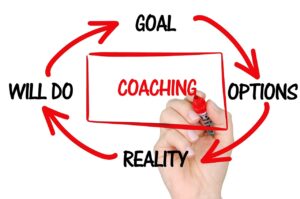In your business, you have to continuously be selling and taking action – so how do you quickly bounce back and pivot after a failure?
When you have a disappointment, it’s important to take fast action afterwards so you aren’t getting stuck! Failure is a part of the process – not everything you do will be 20,000% successful.
It’s really easy to get discouraged but remember: every action you take is valuable.
Table of Contents
ToggleThe first step to bounce back from failure is acknowledgement.
It’s important to know if there was something that could’ve gone better or could’ve been done differently.
When assessing a failure, consider these common reasons for failures: messaging strategy, not using the language of your audience, launching with a small audience, lack of market research, showing up only to sell, bad sales emails or sales page, and overall content strategy.

Mindset: Fixed Mindset VS. Growth Mindset
Fixed Mindset is when you actively avoid failure.
People with fixed mindsets like to look smart and don’t like to be corrected; they avoid challenges, take feedback personally, and are resistant to change.
People with a growth mindset have a desire to learn; they can confront uncertainty, embrace challenges and aren’t afraid to do new things. They like feedback, and see it as an opportunity.
If you are hung up on a failure, chances are you have a fixed mindset.
Reframing into a growth mindset is not a ton of work and it will really help you push through a failure. Moving towards a growth mindset after failure involves commending what went well.
Did you have wins that aren’t associated with dollar signs? We love dollar sign,s but you need to recognize everything you do well!
Acknowledging the things that have gone well will help reduce stress and help you bounce back from failure.
Change your self-talk; write off your limiting beliefs
Shift your negative self-talk by writing out an affirmation on why the negative thought is not true.
- Learn everything you can from your failure. Things fail for a reason!
- Be patient and affirm all other results.
- Take fast action to avoid getting into a funk!
- Change your energy; you have to be able to relax!! If you’re stressed, your brain becomes closed to other opportunities. Find ways to prioritize self-care and ways to celebrate the wins.
Abundance Habits
Daily gratitude is a popular suggestion for shifting your mindset.
Finding things to be grateful for every day helps you to focus on the wins you have. Choose to see the positive even in failure, i.e. “I’m disappointed about the launch I had today but it’s a really beautiful day outside.”
Choosing to see abundance in the little things can be really helpful when shifting your mindset.
Celebrate other people’s wins!
Instead of being envious or thinking, “when is my time coming” see other people’s wins as, “this is possible for me!” Surround yourself with people who are encouraging and willing to celebrate wins together, like a Facebook group.
When setting a goal, find goals that are challenging but possible.
Pushing yourself is important but also seeing your goals in a positive light – so if I don’t reach my goal at the goal date, I think “wow, I am still making good money for someone with the experience that I have and I’m really happy about that.”
Visualize your goals.
Write quarterly goals – then take it a step further by visualizing what it would be like when you reach goals.
When you get into the habit of feeling what you want, it becomes easier to actually obtain that goal. This pushes you into the mindset of the future when your goals have already been obtained.
Do what you love!
There will always be some tasks you don’t want to do, but balance it by doing things you LOVE to do, like one-on-ones.
When is it the right time to pivot?
First and foremost, do not change your niche unless you absolutely have to!
If you can think of a way to serve your current audience, without having to start an entirely new brand, do not change your niche! Ideally what you pivot to will need to relate to your old ideas in one-way or another, to be sold to your current audience.
I had a client who made a very successful pivot – she went from a food and travel blog to teaching her followers how to use Instagram to do what she was doing and earning money through campaigns.
Don’t pivot just because you’ve changed your mind. The easiest way to know if you are being indecisive or if it’s time to pivot is to get outside input from someone a little more experienced than you – like a business coach.
What should you sell after a failure?
A huge pivot many people had to make during the pandemic was in their messaging and content.
Before the pandemic, a lot of companies were offering luxury and although people may have the funds for luxury, there is no more space for it. When pivoting, tie your pivot to a necessity: health, wealth or relationships.
Another great pivot example: I had a client with a design blog. When covid hit, she capitalized and pivoted into providing printable worksheets for kids. That appealed to her audience who was home with kids.
Design and décor is a luxury, but she was able to tie in relationships with kids.
Consider a fast turn-around.
Making sure your pivoted offer has a fast turn-around is not absolutely vital, but is very helpful.
Something with a fast turn-around time would be a service, mini workshops, mini courses – the point of pivoting is to make a quick decision and have the money rolling in as soon as possible.
If people can’t buy now because of your progress of creating the offer, you can always incentivize people to buy for later. I’ve done this previously by preselling offers at a huge discount or taking a non-refundable deposit so people can keep the pricing and purchase offers for later deliveries.
But what should you sell?
Gather data through asking your audience or other people’s audience what they would be interested in from you. The market to tell you what to buy.
If you ever hear, “I love what you did with X, can you give me guidance on Y” listen to those cues!
It’s also easy to go along with whatever is trending – like early on in the pandemic, everyone was Googling self-care. Two weeks into the pandemic, people were Googling home activities with kids.
You can also receive feedback from friends regarding the strengths and uniqueness that they see in you, to gain insight on what you should sell.
Teach what you know, or build a service for your audience – this allows you to provide offers easily without having to put together an entire course or whatever other offer may take up a lot of time.
Consider also leveraging existing partnerships and friendships, to find offers where you can share the workload.
I’m glad to have been able to provide a small guide to how to bounce back after failure, and flip that failure into profit by pivoting.
In order to bounce back from a failure, you have to first work on your mindset, and then figure out what to sell next. If you can work on your mindset to see your failure differently, and to focus more on what you really want and how you can improve, you can become more open to other possibilities.
For an in-depth program to navigate working with a small audience, start getting sales with my Small Audience Sales System.






